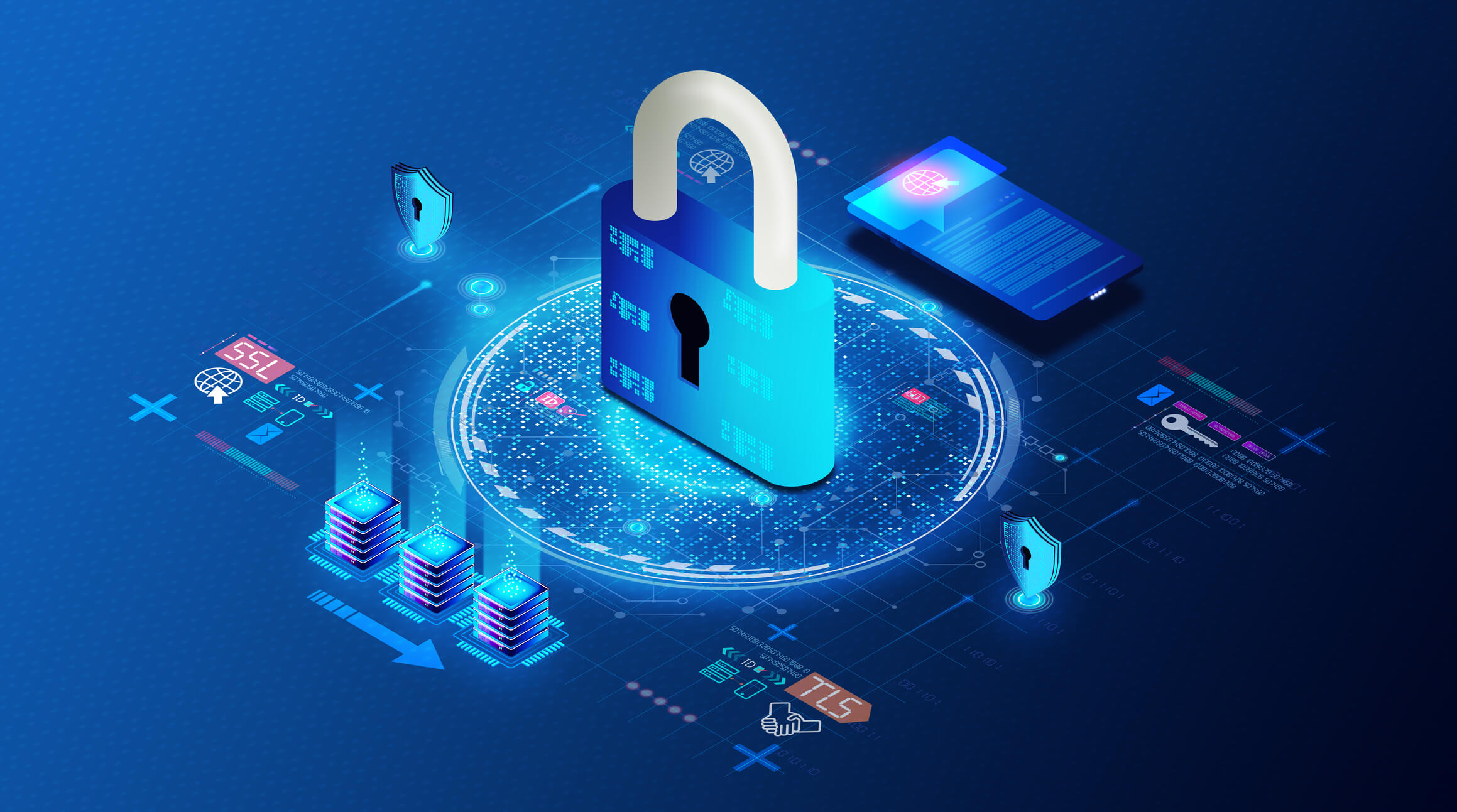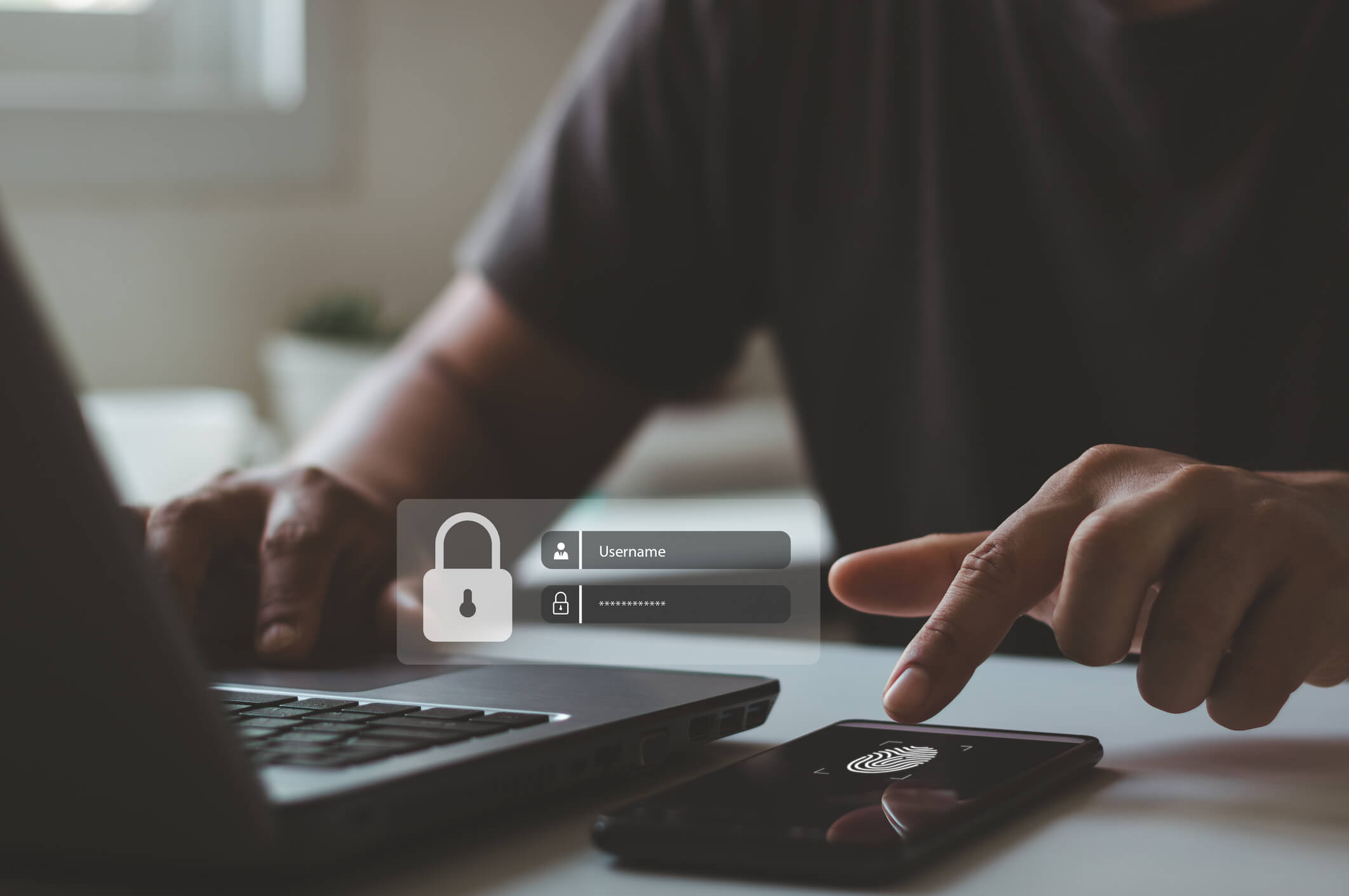Cloud Payment Security Measures
Where online transactions have become the norm, ensuring the security of cloud payment systems is of utmost importance. Cloud payment security measures are designed to protect sensitive payment data and prevent unauthorized access, fraud, and data breaches. This article will provide a comprehensive overview of various cloud payment security measures, including encryption protocols, authentication methods, compliance standards, secure data storage and transmission, fraud detection and prevention techniques, tokenization, security audits and assessments, employee training, and awareness programs.
Understanding the Importance of Secure Cloud Transactions

With the increasing popularity of online shopping and digital payments, the need for robust cloud payment security measures has become more critical than ever. According to a report by Juniper Research, global online payment fraud losses are expected to reach $362 billion billion between 2023 to 2028. This staggering figure highlights the importance of implementing effective security measures to protect both businesses and consumers.
Cloud payment security measures not only safeguard sensitive payment data but also build trust and confidence among customers. When customers feel secure while making online transactions, they are more likely to continue using a particular platform or service. This, in turn, leads to increased customer loyalty and higher revenue for businesses.
Overview of the Risks Associated with Cloud Payment Systems
Cloud payment systems are not without risks. They are vulnerable to various threats, including data breaches, unauthorized access, malware attacks, and insider threats. These risks can result in financial losses, identity theft, and compromised customer data. It is crucial for businesses to understand these risks and take proactive measures to mitigate them. By identifying potential vulnerabilities and implementing appropriate security controls, businesses can minimize the risks associated with cloud payment systems.
Encryption Protocols for Secure Cloud Transactions

Encryption plays a vital role in ensuring the security of cloud payment transactions. It involves converting sensitive payment data into an unreadable format, known as ciphertext, using encryption algorithms. Only authorized parties with the decryption key can decipher the ciphertext and access the original data. Encryption provides confidentiality and protects payment data from unauthorized access. There are several encryption protocols used in cloud transactions, including Secure Sockets Layer (SSL), Transport Layer Security (TLS), and Advanced Encryption Standard (AES).
Exploring the Role of Encryption in Cloud Payment Security
Encryption is a fundamental component of cloud payment security. It protects payment data from interception and unauthorized access during transmission and storage. By encrypting payment data, businesses can ensure that even if the data is compromised, it remains unreadable and unusable to unauthorized individuals. Encryption provides an additional layer of security and helps businesses comply with industry regulations and standards.
Understanding Different Encryption Protocols Used in Cloud Transactions
Different encryption protocols are used in cloud transactions to ensure secure communication between the client and the cloud service provider. Secure Sockets Layer (SSL) and Transport Layer Security (TLS) are widely used encryption protocols that establish a secure connection between the client’s web browser and the cloud server. These protocols use cryptographic algorithms to encrypt data during transmission, preventing eavesdropping and tampering. Advanced Encryption Standard (AES) is a symmetric encryption algorithm commonly used for encrypting and decrypting payment data at rest.
Best Practices for Implementing Encryption in Cloud Payment Systems
Implementing encryption in cloud payment systems requires careful planning and adherence to best practices. Businesses should consider the following practices to ensure the effectiveness of encryption:
- Use strong encryption algorithms: Choose encryption algorithms that are widely recognized and considered secure, such as AES.
- Implement end-to-end encryption: Encrypt payment data at the client’s end and decrypt it only at the cloud service provider’s end. This ensures that the data remains encrypted throughout the entire transaction process.
- Secure key management: Implement robust key management practices to protect encryption keys. Keys should be stored securely and regularly rotated to minimize the risk of unauthorized access.
- Regularly update encryption protocols: Stay up to date with the latest encryption protocols and ensure that they are implemented promptly to address any vulnerabilities or weaknesses.
- Conduct regular security audits: Regularly assess the effectiveness of encryption measures through security audits and penetration testing. This helps identify any weaknesses or vulnerabilities in the encryption implementation.
Authentication Methods in Cloud Payment Systems

Authentication is a crucial aspect of cloud payment security. It verifies the identity of users and ensures that only authorized individuals can access payment systems and perform transactions. Strong authentication methods are essential to prevent unauthorized access and protect against identity theft and fraud. There are various authentication methods used in cloud payment systems, including passwords, biometrics, tokens, and two-factor authentication.
Importance of Strong Authentication in Securing Cloud Payments
Strong authentication is essential for securing cloud payments. Weak or compromised authentication methods can lead to unauthorized access, account takeover, and fraudulent transactions. By implementing strong authentication measures, businesses can ensure that only authorized individuals can access payment systems and perform transactions. Strong authentication provides an additional layer of security and helps protect against identity theft and fraud.
Overview of Different Authentication Methods Used in Cloud Payment Systems
Different authentication methods are used in cloud payment systems to verify the identity of users. Passwords are the most common authentication method, but they can be vulnerable to brute-force attacks and password guessing. Biometrics, such as fingerprint or facial recognition, provide a more secure form of authentication as they are unique to each individual. Tokens, such as smart cards or USB devices, generate one-time passwords that are used for authentication. Two-factor authentication combines two different authentication methods, such as a password and a fingerprint, to enhance security.
Two-Factor Authentication and Its Effectiveness in Cloud Payment Security
Two-factor authentication (2FA) is a highly effective method for securing cloud payments. It adds an extra layer of security by requiring users to provide two different types of authentication credentials. For example, a user may be required to enter a password and provide a fingerprint scan or enter a one-time password generated by a token. Two-factor authentication significantly reduces the risk of unauthorized access and protects against identity theft and fraud.
Compliance Standards for Cloud Payment Security
Compliance standards play a crucial role in ensuring the security of cloud payment systems. They provide guidelines and requirements that businesses must adhere to in order to protect payment data and maintain the integrity of payment processes. Compliance standards help businesses demonstrate their commitment to security and build trust with customers. The Payment Card Industry Data Security Standard (PCI DSS) is one of the most widely recognized compliance standards for cloud payment security.
Overview of Industry Compliance Standards for Cloud Payment Security
Industry compliance standards provide a framework for businesses to follow in order to ensure the security of cloud payment systems. These standards are designed to protect payment data, prevent fraud, and maintain the integrity of payment processes. In addition to the PCI DSS, other industry compliance standards include the ISO/IEC 27001, which provides a comprehensive framework for information security management, and the General Data Protection Regulation (GDPR), which focuses on the protection of personal data.
Understanding the Payment Card Industry Data Security Standard (PCI DSS)
The Payment Card Industry Data Security Standard (PCI DSS) is a set of requirements designed to ensure the security of payment card data. It applies to businesses that store, process, or transmit payment card data. The PCI DSS provides guidelines for securing payment systems, protecting cardholder data, and implementing strong security measures. Compliance with the PCI DSS is mandatory for businesses that accept payment cards, and non-compliance can result in fines, penalties, and loss of reputation.
Compliance Requirements for Cloud Service Providers Handling Payment Data
Cloud service providers that handle payment data are also subject to compliance requirements. They must adhere to industry standards and regulations to ensure the security of payment data and protect their customers’ sensitive information. Cloud service providers must implement robust security measures, including encryption, access controls, and regular security audits. They must also comply with industry-specific regulations, such as the PCI DSS, and provide evidence of their compliance to their customers.
Secure Data Storage and Transmission in Cloud Payment Systems
Secure data storage and transmission are critical components of cloud payment security. Businesses must ensure that payment data is stored securely and protected from unauthorized access. They must also ensure that payment data is transmitted securely between the client and the cloud service provider. By implementing best practices for secure data storage and transmission, businesses can minimize the risk of data breaches and unauthorized access.
Best Practices for Secure Data Storage in Cloud Payment Systems
Secure data storage is essential for protecting payment data from unauthorized access. Businesses should consider the following best practices for secure data storage in cloud payment systems:
- Implement strong access controls: Restrict access to payment data to authorized individuals only. Use role-based access controls and regularly review and update user permissions.
- Encrypt payment data at rest: Encrypt payment data stored in the cloud to protect it from unauthorized access. Use strong encryption algorithms and secure key management practices.
- Regularly backup payment data: Implement regular backup procedures to ensure that payment data is not lost in the event of a system failure or data breach. Store backups securely and test the restoration process regularly.
- Monitor and log access to payment data: Implement logging and monitoring mechanisms to track access to payment data. Regularly review logs for any suspicious activity or unauthorized access.
- Implement data retention policies: Define data retention policies to ensure that payment data is not stored longer than necessary. Regularly review and delete outdated or unnecessary data.
Ensuring Secure Transmission of Payment Data in the Cloud
Secure transmission of payment data is crucial to prevent interception and tampering during transit. Businesses should consider the following practices to ensure secure transmission of payment data in the cloud:
- Use secure communication protocols: Use encryption protocols, such as SSL or TLS, to establish a secure connection between the client and the cloud service provider. This ensures that payment data is encrypted during transmission.
- Implement secure network configurations: Configure firewalls, intrusion detection systems, and other network security measures to protect against unauthorized access and network attacks.
- Regularly update and patch systems: Keep all systems and software up to date with the latest security patches to address any vulnerabilities or weaknesses that could be exploited during transmission.
- Use secure file transfer protocols: Use secure file transfer protocols, such as SFTP or FTPS, to transfer payment data between systems. These protocols encrypt data during transit and provide authentication mechanisms.
Role of Data Encryption in Securing Data at Rest and in Transit
Data encryption plays a crucial role in securing payment data both at rest and in transit. Encryption ensures that payment data remains unreadable and unusable to unauthorized individuals, even if it is intercepted or accessed without authorization. By encrypting payment data at rest, businesses can protect it from unauthorized access in the event of a data breach or physical theft. Similarly, by encrypting payment data during transit, businesses can prevent interception and tampering, ensuring the integrity and confidentiality of the data.
Risk Assessment and Mitigation in Cloud Payment Systems
Risk assessment and mitigation are essential components of cloud payment security. Businesses must identify potential vulnerabilities and threats in their cloud payment systems and take proactive measures to mitigate these risks. By conducting regular risk assessments and implementing appropriate security controls, businesses can minimize the likelihood and impact of security incidents and protect their payment systems from unauthorized access and fraud.
Conducting Risk Assessments for Cloud Payment Systems
Risk assessments are crucial for identifying potential vulnerabilities and threats in cloud payment systems. Businesses should conduct regular risk assessments to evaluate the effectiveness of their security controls and identify any weaknesses or vulnerabilities that could be exploited. Risk assessments involve identifying assets, assessing threats and vulnerabilities, determining the likelihood and impact of security incidents, and prioritizing mitigation measures.
Identifying Potential Vulnerabilities and Threats in Cloud Payment Systems
Identifying potential vulnerabilities and threats is a critical step in securing cloud payment systems. Businesses should consider the following areas when assessing vulnerabilities and threats:
- Network security: Assess the security of the network infrastructure, including firewalls, routers, and switches. Identify any weaknesses or vulnerabilities that could be exploited to gain unauthorized access to payment systems.
- Application security: Evaluate the security of payment applications, including web applications and mobile apps. Look for vulnerabilities, such as insecure coding practices or inadequate input validation, that could be exploited to compromise payment systems.
- Access controls: Review access controls and user permissions to identify any weaknesses or vulnerabilities. Look for unauthorized access or excessive privileges that could lead to unauthorized transactions or data breaches.
- Physical security: Assess the physical security measures in place to protect payment systems. Look for weaknesses, such as inadequate access controls or lack of surveillance, that could result in physical theft or unauthorized access.
Strategies for Mitigating Risks and Enhancing Cloud Payment Security
Mitigating risks and enhancing cloud payment security requires a proactive approach. Businesses should consider the following strategies to minimize the likelihood and impact of security incidents:
- Implement strong access controls: Restrict access to payment systems and data to authorized individuals only. Use strong authentication methods, such as two-factor authentication, and regularly review and update user permissions.
- Regularly update and patch systems: Keep all systems and software up to date with the latest security patches to address any vulnerabilities or weaknesses that could be exploited.
- Implement intrusion detection and prevention systems: Use intrusion detection and prevention systems to monitor network traffic and detect any unauthorized access or suspicious activity. Configure these systems to alert administrators of potential security incidents.
- Conduct regular security audits and penetration testing: Regularly assess the effectiveness of security controls through security audits and penetration testing. This helps identify any weaknesses or vulnerabilities that could be exploited and allows businesses to take appropriate mitigation measures.
Monitoring and Incident Response in Cloud Payment Security
Continuous monitoring and incident response are crucial for maintaining the security of cloud payment systems. Businesses must monitor their payment systems and networks for any suspicious activity or unauthorized access. In the event of a security incident, businesses must have an incident response plan in place to minimize the impact and restore normal operations as quickly as possible. Security information and event management (SIEM) systems play a vital role in monitoring and incident response.
Importance of Continuous Monitoring in Cloud Payment Systems
Continuous monitoring is essential for detecting and responding to security incidents in cloud payment systems. By monitoring payment systems and networks in real-time, businesses can identify any suspicious activity or unauthorized access and take immediate action to mitigate the impact. Continuous monitoring allows businesses to detect security incidents early and respond promptly, minimizing the potential damage and disruption to payment processes.
Implementing Incident Response Plans for Cloud Payment Security Breaches
Having an incident response plan is crucial for effectively managing security breaches in cloud payment systems. An incident response plan outlines the steps to be taken in the event of a security incident, including the roles and responsibilities of the incident response team, communication protocols, and recovery procedures. The plan should be regularly reviewed, tested, and updated to ensure its effectiveness. By having a well-defined incident response plan, businesses can minimize the impact of security breaches and restore normal operations quickly.
Role of Security Information and Event Management (SIEM) in Cloud Payment Security
Security information and event management (SIEM) systems play a vital role in cloud payment security. SIEM systems collect and analyze security event logs from various sources, including network devices, servers, and applications, to detect potential security incidents. They provide real-time visibility into the security posture of an organization’s IT environment, enabling rapid detection and response to threats.
Implementing SIEM Systems for Enhanced Monitoring and Alerting
Implementing SIEM systems involves integrating them with existing IT infrastructure to collect and analyze log data from various sources. SIEM systems use rules and algorithms to correlate events and identify anomalies that may indicate a security incident. They can generate alerts based on predefined thresholds or suspicious patterns, enabling security teams to respond to incidents more quickly and effectively.
Conclusion
Cloud payment security is a multifaceted challenge that requires a comprehensive approach encompassing encryption, authentication, compliance, secure data storage and transmission, risk assessment, monitoring, incident response, and adherence to best practices. By leveraging emerging technologies and maintaining a proactive stance towards security, businesses can safeguard their payment systems against evolving threats and ensure the trust and confidence of their customers.










